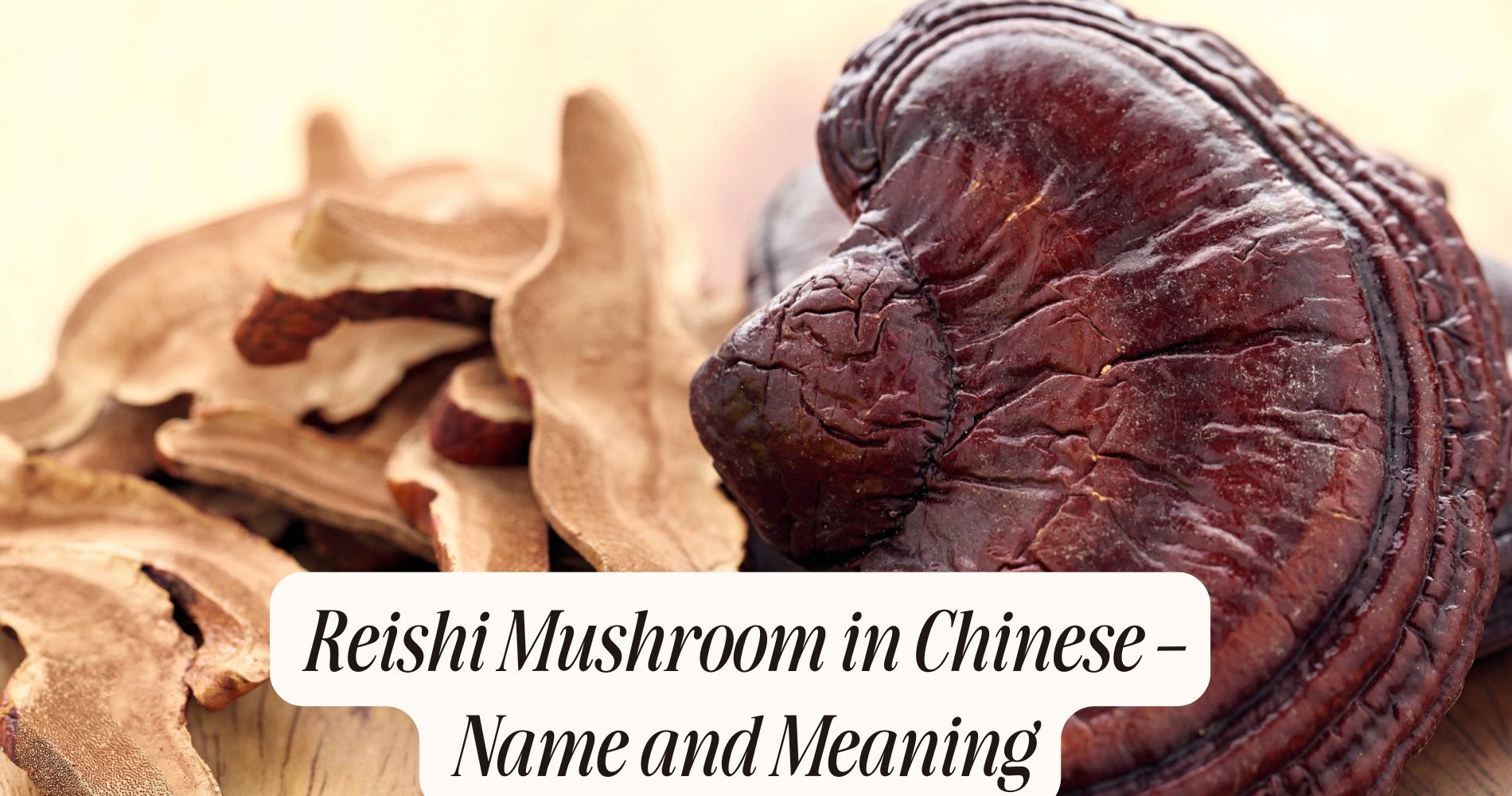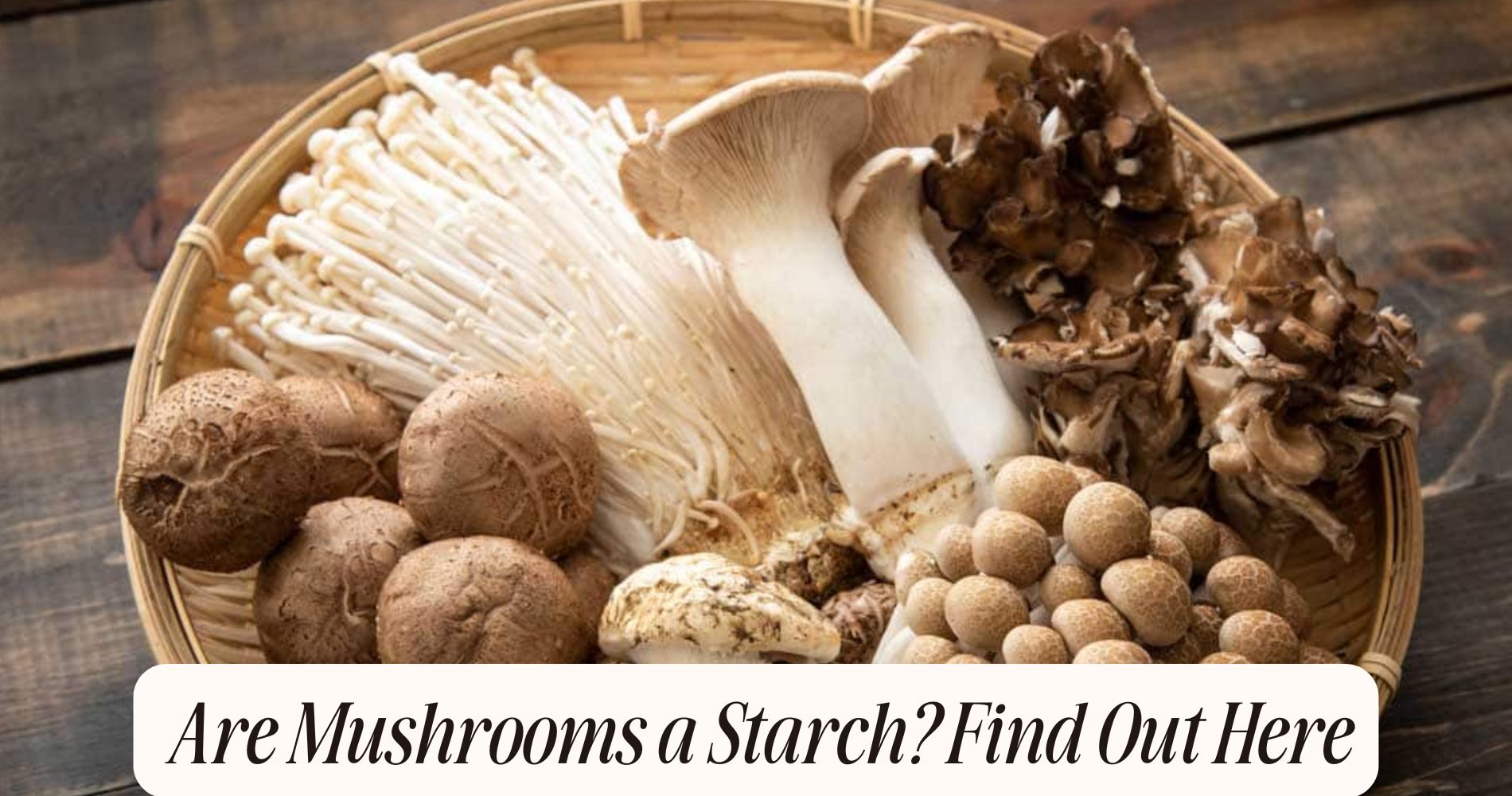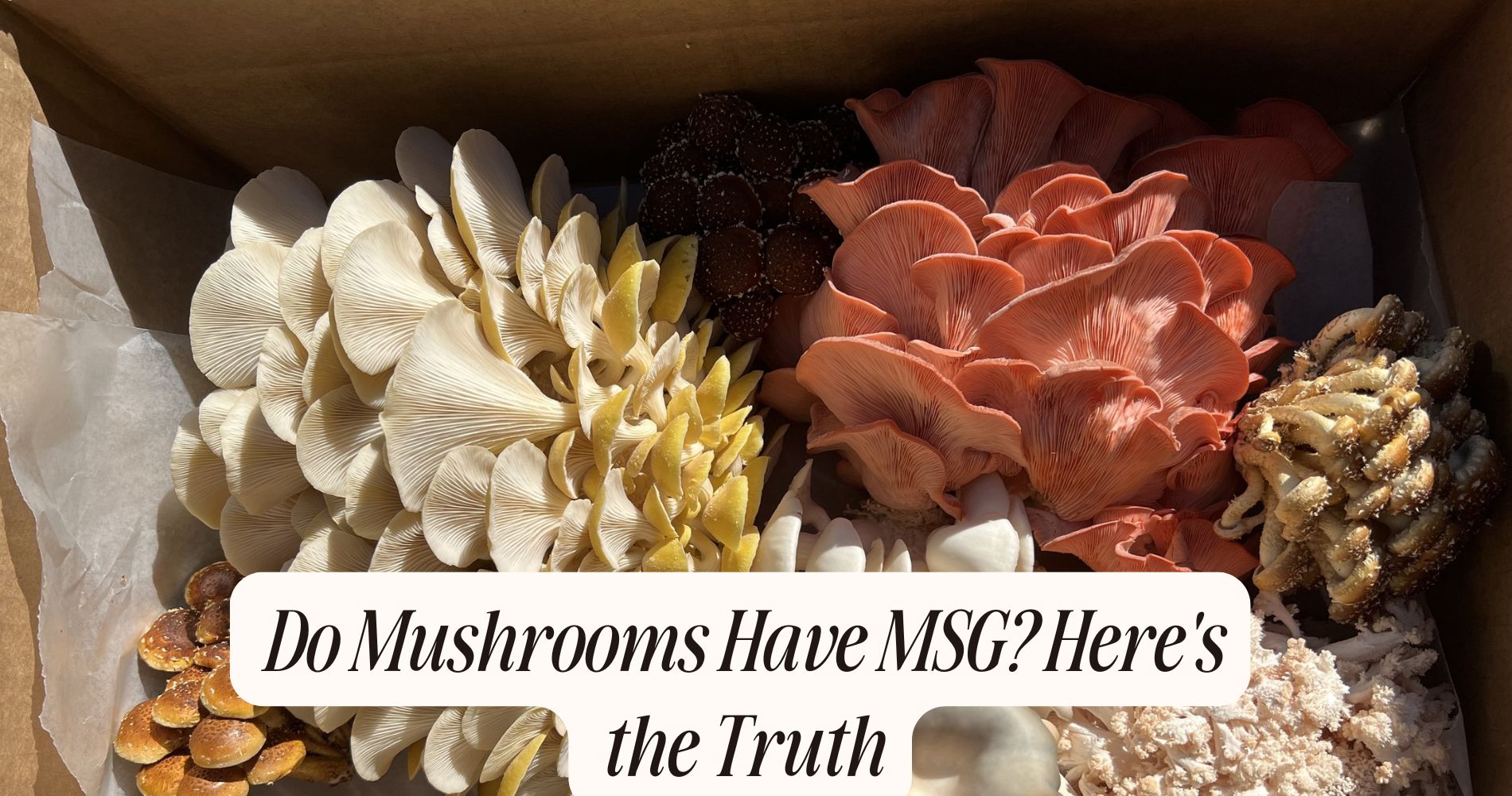
Reishi Mushroom in Chinese – Name and Meaning
The Reishi mushroom in Chinese is known as 灵芝 (Líng Zhī), a name rich in both medicinal meaning and cultural symbolism. “Líng” conveys notions of spirit, potency, and mystery, while “Zhī” refers to an auspicious, rare fungus. For over two thousand years, Reishi has held a place of honor in Daoist philosophy and traditional Chinese medicine, where it's associated with longevity, vitality, and spiritual enlightenment. The etymology of its Chinese name reflects this deep heritage—linking it to health, harmony, and transcendence. Dive deeper to explore its powerful symbolism and lasting influence in Chinese culture.
The Chinese Characters for Reishi Mushroom
Why does the term “Reishi mushroom” hold such significance in Chinese culture? You’ll find its roots in the Chinese characters 灵芝 (Líng Zhī).
The character 灵 denotes “spirit” or “efficacy,” emphasizing the mushroom’s revered medicinal properties, while 芝 refers specifically to a rare, auspicious fungus.
Historically, these characters reflect both the spiritual and therapeutic value ascribed to Reishi in classical texts. As you explore further, you’ll see that descriptions of cultivation methods appear in ancient Chinese pharmacopeias, where the careful nurturing of 灵芝 symbolizes harmony between human technique and natural forces.

The system of naming encapsulates both the practical aspects of medicinal usage and the mystical qualities attributed to this fungus, showing how language encodes centuries of empirical and cultural knowledge.
Pronunciation Guide: How to Say 灵芝 (Líng Zhī)
Recognizing the cultural and historical weight behind the characters 灵芝, accurate pronunciation becomes a matter of respect and understanding.
To articulate 灵芝 correctly, break it down into two syllables: “Líng” (pronounced as “leeng,” with a rising tone) and “Zhī” (pronounced as “jrr,” with a high-level tone).
The tonal distinctions are essential, as Mandarin tones can alter meanings markedly, especially for terms deeply embedded in traditional Chinese medicine.
When you refer to 灵芝 in the context of its renowned medicinal properties or its emerging culinary uses, proper pronunciation signals both cultural literacy and scientific precision.
Mastering “Líng Zhī” allows you to engage authentically in discussions about this revered fungus, which has maintained an esteemed status for centuries in Chinese pharmacology and gastronomy.
Etymology and Literal Translation of 灵芝
Although the term 灵芝 (Líng Zhī) appears simple at first glance, its etymology reveals deep cultural and symbolic resonance within Chinese tradition.
When you break down the characters, 灵 (líng) translates to “spirit,” “numinous,” or “efficacious,” emphasizing the mushroom’s association with supernatural potency and healing.
芝 (zhī) refers specifically to a type of fungus, often interpreted as “mushroom” within botanical classification.

Together, 灵芝 literally means “spirit mushroom” or “numinous fungus,” succinctly encapsulating both its revered medicinal properties and its unique botanical identity.
This linguistic construction aligns with the mushroom’s classification in pharmacopoeias, highlighting its dual significance in both scientific taxonomy and traditional medicine.
The term’s etymology thus bridges the domains of botany and therapeutic application in Chinese thought.
Historical Importance of Reishi in Chinese Culture
Rooted in the annals of Chinese civilization, Reishi mushroom—known as 灵芝—has functioned as a symbol of longevity, spiritual potency, and imperial authority for over two millennia. When you examine classical Chinese texts, you'll find systematic references to Reishi's medicinal properties in materia medica like the “Shennong Bencao Jing.”
Emperors and scholars alike revered 灵芝 for its reputed ability to promote vigor and extend lifespan, integrating it into court rituals and medical practice. Its scarcity and unique morphology elevated its status, making it a coveted resource among the elite.
Over centuries, the mushroom's association with spiritual symbolism and health fostered its integration into Daoist and traditional Chinese medicine frameworks, highlighting its profound role in shaping both philosophical and therapeutic paradigms in Chinese culture.
Symbolism and Spiritual Meaning of Reishi
Beyond its historical role in Chinese medicine and imperial culture, 灵芝 occupies a unique position in the symbolic landscape of Chinese thought.
When you encounter 灵芝, you're engaging with a tradition where the mushroom signifies longevity, spiritual healing, and transcendence.
In Daoist philosophy, it serves as an emblem of immortality, reflecting a deep-rooted belief in the possibility of harmonizing body and spirit.
Its meditative symbolism extends to practices that cultivate inner tranquility and enlightenment, positioning 灵芝 as a conduit between the physical and metaphysical spheres.
Reishi in Chinese Art and Literature
How has 灵芝 shaped the visual and literary imagination of Chinese culture? You’ll find its influence deeply embedded in both classical art and literature. Artists often depict 灵芝 in intricate brush paintings, jade carvings, and lacquerware, using its unique form to symbolize longevity and supernatural efficacy.
These artistic representations aren’t just decorative; they systematically reference the mushroom’s renowned medicinal properties, alluding to its role as an elixir in Daoist mythology. Poets and scholars, from the Han dynasty onward, praise 灵芝 in verses and prose, associating it with immortality and moral virtue.

You’ll notice that its visual and textual portrayals often intertwine, reinforcing its historical status as a symbol of health and transcendence. This dual presence elevates 灵芝’s prestige in Chinese cultural heritage.
Modern Usage and Popularity in China
Curiously, the enduring legacy of 灵芝 continues to shape modern Chinese society, where its medicinal and cultural significance permeate daily life and consumer markets alike.
Today, you’ll find that 灵芝 is deeply integrated into both traditional and mainstream health practices due to its scientifically recognized modern health benefits—ranging from immunomodulation to antioxidant properties.
Driven by current market trends, manufacturers have diversified 灵芝 products into capsules, teas, and even beauty formulations, responding to increasing consumer demand for functional foods and wellness supplements.
You can observe a robust supply chain, with e-commerce platforms and pharmacies highlighting 灵芝’s premium status.
This phenomenon reflects a systematic inheritance of historical reverence, now fused with contemporary health consciousness, ensuring 灵芝’s relevance in both everyday routines and evolving healthcare paradigms.
Ancient Wisdom, Modern Convenience: SUPER MUSHROOM GUMMIES
Inspired by the centuries-old power of Reishi mushroom in Chinese wellness traditions? Now you can experience its benefits—alongside nine other functional mushrooms—in a modern, delicious form with Well Gummies' SUPER MUSHROOM GUMMIES. These vegan, chewable gummies are designed to naturally fuel your brain, support immunity, and deliver calmer energy and sharper focus. With a fresh wild berry flavor and no jitters or crash, they offer a convenient way to tap into ancient mushroom wisdom while fitting seamlessly into your daily routine. Embrace balanced wellness the tasty way with Well Gummies!

Frequently Asked Questions
Are There Any Side Effects of Consuming Reishi Mushroom?
When you consume reishi mushroom, you might experience adverse reactions like dizziness, dry mouth, or stomach upset. Always follow dosage guidelines, since excessive intake historically links to more significant effects. Consult professionals for personalized recommendations.
How Is Reishi Mushroom Traditionally Prepared in Chinese Medicine?
You’ll traditionally prepare reishi mushroom in Chinese medicine using a traditional decoction, simmering sliced fruiting bodies in water. Alternatively, you can create a mushroom tincture by soaking the mushroom in alcohol, both methods reflecting centuries-old pharmacological practices.
Where Does Reishi Mushroom Grow Naturally in China?
You’ll find Reishi mushroom habitat in humid, densely forested mountain areas. It’s native to Chinese regions like Zhejiang, Fujian, and Yunnan. Historically, scholars documented its preference for decaying hardwoods, especially in subtropical and temperate climates.
What Are the Main Health Benefits of Reishi Mushroom?
When you explore Reishi mushroom health benefits, you'll find it’s renowned for immune system support, stress reduction, and anti-inflammatory effects. Historically, traditional Chinese medicine has used it for centuries to promote vigor and longevity through systemic immune modulation.
Can Reishi Mushroom Interact With Prescription Medications?
You should recognize potential medication interactions with reishi mushroom, especially anticoagulants and immunosuppressants. Historically, practitioners emphasized safety precautions, systematically evaluating herbal and pharmaceutical regimens to optimize therapeutic benefits and minimize adverse effects within traditional and contemporary clinical frameworks.
Conclusion
As you've seen, 灵芝 (Líng Zhī) isn’t just a medicinal mushroom—it’s a symbol deeply rooted in Chinese thought, art, and tradition. Understanding its etymology and historical significance reveals how it’s intertwined with spiritual ideals and health philosophies. When you encounter reishi in modern China, you’re witnessing a living legacy, where ancient reverence and contemporary wellness converge. This systematic analysis highlights why 灵芝 remains an enduring emblem in Chinese culture.



